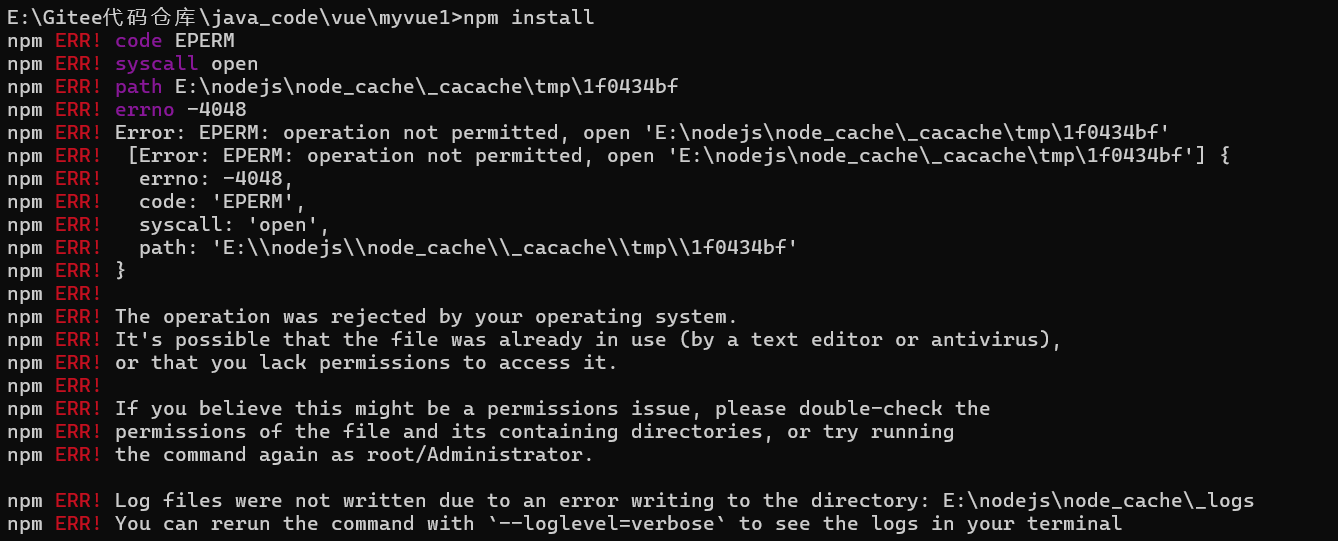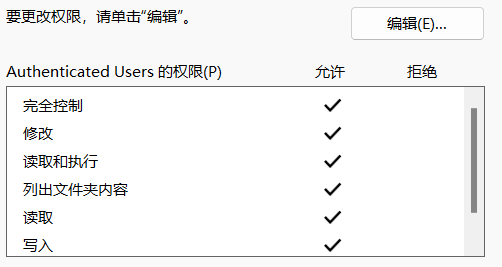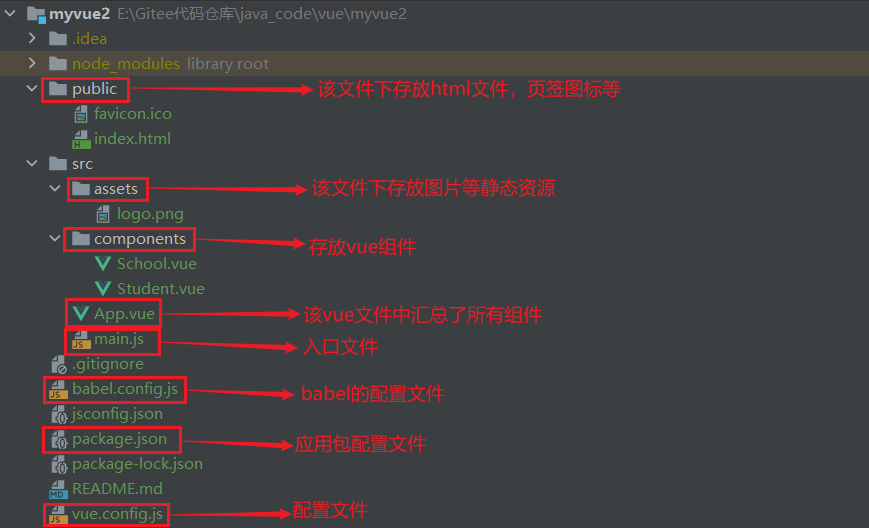目录
一、vue基本语法
1.插值表达式 {{}}
2.显示数据(v-text)和(v-html)
3.事件处理(v-on)
4.循环遍历(v-for)
5.判断语法(v-if)
6.元素显示与隐藏(v-show)
7.动态设置属性(v-bind)
8.数据双向绑定(v-model)
9.计算属性
二、vue组件
1.使用组件的三个步骤
2.注册组件的两种方式
3.组件嵌套
4.认识vue文件
5.创建组件并暴露的写法
三、axios异步请求
1.引入axios
2.get和post请求
3.vue+axios
四、创建 vue-cli 脚手架
1.什么是npm
2.使用webpack手动执行(不用脚手架)
3.创建脚手架步骤
4.npm run serve 命令可能出现的问题
5.vue脚手架项目结构
6.项目创建步骤示例(脚手架中执行)
五、vuex
六、vue-router 前端路由
1.基本使用
2.路由嵌套
七、Vue插件库的使用
一、vue基本语法
1.插值表达式 {{}}
插值表达式用户把vue中所定义的数据,显示在页面上.。
el挂载点:设置Vue实例挂载(管理)的元素
语法:{{ 变量名/对象.属性名 }}
案例:
<div id="one">{{message}}
</div>
<script>var v1 = new Vue({el: "#one",data: {message: "hello world!"},})
</script>2.显示数据(v-text)和(v-html)
v-test和v-html都是专门用来展示数据,其作用和插值表达式类似。并且还可以解决因网速慢差值表达式会显示原始的{{}}问题。
区别
v-text:把数据当作纯文本显示.
v-html:遇到html标签,会正常解析
示例
<div id="one" ><div v-text="message"></div><div v-html="message"></div>
</div>
<script>var v = new Vue({el: '#one',data: {message: "<h3>哈哈哈</h3>"}});
</script>结果

3.事件处理(v-on)
Vue中也可以给页面元素绑定事件.如元素点击click事件,提交submit事件,回车keyup.enter事件。
- 语法
<!--完整写法-->
<button v-on:事件名="函数名/vue表达式">点击</button>
<!--简化写法-->
<button @事件名="函数名/vue表达式">点击</button>
- 案例
<div id="one"><button v-on:click="addition()">加1</button><button v-on:click="subtraction()">减1</button><h1>{{score}}</h1>
</div>
<script>var app = new Vue({el:"#one",data:{score: 60},methods: {// 加1 addition() {this.score+=1;},// 减1subtraction() {this.score-=1;},}});
</script>4.循环遍历(v-for)
1.遍历数组
- 语法
v-for="item in items" // 遍历数组
v-for="(item,index) in items" // 遍历数组加下标
- 示例
<div id="one"><li v-for="user in users">{{user}}</li><li v-for="(user,index) in users">{{user}}--{{index}}</li>
</div>
<script>var v1 = new Vue({el: "#one",data: {users: ['user1','user2','user3','user4','user5']},})
</script>2.遍历对象
- 语法
v-for="value in object"
v-for="(value,key) in object"
v-for="(value,key,index) in object"
- 示例
<div id="one"><li v-for="key in person">{{key}}</li><li v-for="(key,value) in person">{{key}}--{{value}}</li><li v-for="(key,value,index) in person">{{key}}--{{value}}--{{index}}</li>
</div>
<script>var v1 = new Vue({el: "#one",data: {person: {"username":"lisi","age":"20","gender":"男"}},})
</script>3.向数组中添加或删除元素
- 示例
<div id="one"><button @click="add">添加</button><button @click="remove">移除</button><li v-for="user in users">{{user}}</li>
</div>
<script>var v1 = new Vue({el: "#one",data: {users: ['user1','user2','user3','user4','user5']},methods: {// 向users数组中添加元素add() {this.users.unshift("user6");},// 移除users中的元素remove() {this.users.shift();},}})
</script>5.判断语法(v-if)
- 语法
v-if="判断语句"
v-else-if="判断语句"
v-else- 示例
<div id="one">请输入你的成绩:<input type="text" v-model.number="score"><div v-if="score>=90"> <h2>优秀!</h2></div><div v-else-if="score>=80"> <h2>良好!</h2> </div><div v-else-if="score>=70"> <h2>中等!</h2> </div><div v-else-if="score>=60"> <h2>及格!</h2> </div><div v-else><h2>不及格!</h2> </div>
</div>
<script>var app = new Vue({el:"#one",data:{score: 60},});
</script>6.元素显示与隐藏(v-show)
条件满足(为true)时,显示元素,反之不显示。但是此元素依然存在,只是其CSS属性display变为none了。
<div id="one" ><h1 v-show="show">hello world!</h1>
</div>
<script>var v = new Vue({el: '#one',data: {show: true}});
</script>当show设置为false时:

7.动态设置属性(v-bind)
常用于动态设置标签的属性值,如src,href,value,class等等
- 语法
v-bind:value="" //正常写法
:value="" //简写- 示例
<div id="one"><input type="button" v-bind:value="message">
</div>
<script>var v1 = new Vue({el: "#one",data: {message: "哈哈"},})
</script>8.数据双向绑定(v-model)
数据双向绑定可以实现数据变化的时候,页面会自动刷新,页面变化的时候,数据也会自动变化。
双向绑定只能绑定文本框,单选框,复选框,文本域以及下拉列表等表单元素。
1.绑定文本框
<div id="one"><input type="text" v-model="message"><span>{{message}}</span>
</div>
<script>var v1 = new Vue({el:"#one",data:{// 该属性和文本框的属性保持一致message: ""},});
</script>
2.绑定单个复选框
<div id="one"><input type="checkbox" v-model="message">同意<br><span>{{message}}</span>
</div>
<script>var v1 = new Vue({el:"#one",data:{// 该属性和文本框的属性保持一致message: false},});
</script>

3.绑定多个复选框
<div id="one"><input type="checkbox" v-model="message" value="Java">Java<br><input type="checkbox" v-model="message" value="Python">Python<br><input type="checkbox" v-model="message" value="C++">C++<br><span>{{message}}</span>
</div>
<script>var v1 = new Vue({el:"#one",data:{// 数组中的值就是被选中的元素的value属性值message: []},});
</script>

9.计算属性
1.计算属性很重要的特性: 带缓存, 性能极强。
2.在第一次使用该属性时进行计算, 计算后将结果缓存起来, 后面如果还有其他地方用到, 会直接从缓存中取值, 不会再次计算。
3.如果方法中的某些数据更新了,与此相关的方法都会重新执行一遍。
- 语法
computed: {}- 示例
<div id="one">{{currentTime_methods()}}<br> <!-- methods里的方法调用要加() -->{{currentTime_computed}} <!-- computed里的方法调用不加 计算属性 -->
</div>
<script>var v1 = new Vue({el: "#one",data: {message: "hello world!"},methods: {currentTime_methods: function () {return Date.now();}},// 计算属性computed: {currentTime_computed: function () {return Date.now();}}
});二、vue组件
1.使用组件的三个步骤
- 创建一个组件 (Vue.extend)
- 注册组件
- 使用组件
<div id="root"><!-- 3.使用student组件 --><student></student><school></school>
</div>
<!--<script src="vue/vue.min.js"></script>-->
<script>// Vue.config.devtools = true// 1. 创建student组件let student = Vue.extend({template: `<div><h1>{{ id }}--{{ name }}</h1></div>`,data(){return{id: '11',name: 'lisi',}}})// 创建组件可以简写// let student = {// template: `<div>// <h1>{{ id }}--{{ name }}</h1>// </div>`,// data(){// return{// id: '11',// name: 'lisi',// }// }// }// 1. 创建school组件let school = Vue.extend({template: `<div><h1>{{ schoolName }}--{{ address }}</h1></div>`,data(){return{schoolName: '实验小学',address: '陕西省咸阳市',}}})new Vue({el: '#root',data: {},// 2.注册组件(局部注册)components: {student,school}});2.注册组件的两种方式
- 局部注册
- 全局注册
// 局部注册组件
new Vue({el: '#root',data: {},// 2.注册组件(局部注册)components: {student}});// 全局注册组件 可以在任何div容器下使用该组件标签
Vue.component('student',student)3.组件嵌套
<script> // 如下school组件中嵌套了student组件// 1. 创建student组件let student = Vue.extend({template: `<div><h1>{{ id }}--{{ name }}</h1></div>`,data(){return{id: '11',name: 'lisi',}}})// 1. 创建school组件let school = Vue.extend({template: `<div><h1>{{ schoolName }}--{{ address }}</h1></div>`,data(){return{schoolName: '实验小学',address: '陕西省咸阳市',}},components: {// 组件嵌套student}})
</script>4.认识vue文件
<template><!-- 组件的结构 (模版里必须要有一个根元素,用div)包裹 --><div>...</div>
</template><script>
// 组件交互相关的代码(数据,方法等等)
// export 暴露导出模块
export default {name: "App" // 组件名
}
</script><style scoped>
/*组件的样式*/
</style>5.创建组件并暴露的写法
// 如下写法其实是一种简写
export default {}// 完整如下
export const Student = Vue.extend({})
export default(Student)
// 或者export let Student = Vue.export({})三、axios异步请求
axios是一个基于 promise 的 HTTP 库, 主要用于:发送异步请求获取数据。
1.引入axios
<script src="https://unpkg.com/axios/dist/axios.min.js"></script>2.get和post请求
语法
// 方法一默认为正常响应回的数据,方法二为错误信息
axios.get("地址?key1=value1&key2=value2").then(function(response){},function(err){})
axios.post("地址",{key1:value1,key2:value2}).then(function(response){},function(err){})示例
<script>// get请求axios.get("地址?key1=value1&key2=value2").then(// then中的第一个方法是响应成功返回的数据,第二个方法是返回的错误信息function (response) {console.log(response);},function (err) {console.log(err);})//post请求axios.post("地址",{// 请求参数username: "lisi",password: "123"}).then(// then中的第一个方法是响应成功返回的数据,第二个方法是返回的错误信息function (response) {console.log(response);},function (err) {console.log(err);})
</script>3.vue+axios
<script>var v1 = new Vue({el: "#one",data: {user: {}},// 当页面加载完毕后created() {axios.get("info/userinfo",{// get请求的参数params: {username: "admin",password: "123",},// 响应数据格式为jsonresponseType: "json",}).then(ret => {// 打印响应数据console.log(ret.data);// 把响应数据赋值给vue中的user属性this.user=ret.data;}).catch(err => {// 打印错误信息console.log(err);});}});
</script>四、创建 vue-cli 脚手架
1.什么是npm
npm是JS的一个包管理程序,相当于后端的maven,Node Package Manager 。
2.使用webpack手动执行(不用脚手架)
// 1.创建项目
vue init webpack 项目名
// 2,进行该项目
cd 项目
// 3.安装运行环境
npm install
// 4.启动项目
npm run dev
// 5.结束项目
ctrl+c// 由于JS文件引入使用了import,是es6语法,浏览器不认识,需要将该Js文件通过webpack
// 打包成一个新的压缩的JS文件后,再引入HTML文件中// 对JS文件打包成压缩的浏览器认识的JS文件,需要在webpack.confog.js
// 文件中配置【注意//webpack.confog.js配置文件的位置】
//module.exports = {
// entry: './modules/main.js', // 程序入口
// output: {
// filename: './js/bundle.js' // 打包生成的JS文件位置
// }
//}
webpack //打包命令可能出现的问题

解决办法
对 node_global文件,node_cache文件 右键->属性->安全->编辑,全勾上。

3.创建脚手架步骤
- 1. 创建vue项目
vue create 项目名
- 2.进入该项目
cd 项目名- 3.启动项目
npm run serve- 4.结束项目
ctrl + c
4.npm run serve 命令可能出现的问题
原因是存在语法检查,组件命名没有按照它规范来。
解决办法:在vue.config.js文件中添加如下代码即可。
lintOnSave: false
5.vue脚手架项目结构

6.项目创建步骤示例(脚手架中执行)
- 首先创建两个vue文件(Student和School)
- 再创建一个vue文件(App),该文件嵌套上面两个文件(组件引入)
- 再创建一个JS文件(main),引入App.vue文件
- 最后创建一个HTML文件(index),并引入使用webpack打包而成的JS文件
- 最后在当前项目下使用 npm run serve 命令启动项目
首先创建两个vue文件(Student和School)
School.vue文件
<template>
<!-- 组件的结构 (模版里必须要有一个根元素) --><div><h2>学校名称:{{name}}</h2><h2>学校地址:{{address}}</h2><button @click="showName">点我提示学校名</button></div>
</template><script>
// 组件交互相关的代码(数据,方法等等)
// export 将。。。暴露
export default {name: "School", //组件名,最好跟文件名相同data() {return {name: '希望中学',address: '陕西省西安市'}},methods: {showName: function () {alert(this.name);}}
}
</script><style scoped>/*组件的样式*/
</style>student.vue文件
<template><div><h2>学生姓名:{{name}}</h2><h2>学生年龄:{{age}}</h2><button @click="showName">点我提示学生名</button></div>
</template><script>
export default {name: "Student",data() {return {name: '张三',age: '18'}},methods: {showName: function () {alert(this.name);}}}
</script><style scoped></style>再创建一个vue文件(App),该文件嵌套上面两个文件(即引入两个vue文件)
<template>
<!-- 使用这两个组件--><div> <!-- 切记模版里必须要有一个根元素 --><School></School><Student></Student></div>
</template><script>// 导入这两个组件import School from './components/School.vue'import Student from './components/Student.vue'export default {name: "App",data() {},components: {School,Student}}
</script><style scoped></style>再创建一个JS文件(main),引入App.vue文件
// 引入vue组件
import Vue from 'vue'
// 引入App组件
import App from './App.vue'Vue.config.productionTip = falsenew Vue({render: h => h(App),
}).$mount('#app')最后创建一个HTML文件(index)
<!DOCTYPE html>
<html lang=""><head><meta charset="utf-8"><meta http-equiv="X-UA-Compatible" content="IE=edge"><meta name="viewport" content="width=device-width,initial-scale=1.0"><link rel="icon" href="<%= BASE_URL %>favicon.ico"><title><%= htmlWebpackPlugin.options.title %></title></head><body><div id="app"></div><!-- built files will be auto injected --></body>
</html>文件创建完毕,使用如下命令启动项目
npm run serve五、vuex
实现多组件共享数据,管理数据的一个插件。
六、vue-router 前端路由
1.基本使用
1.安装vue-router
// 1.安装vue路由,3表示路由版本是3版本,路由3版本对应vue2版本
npm i vue-router@32.编写router配置项(js文件)
/*** 该文件专门用来创建应用的路由器*/// 引入vue-router
import VueRouter from 'vue-router'// 引入路由对应的组件
import Student from './Student.vue'
import School from './School.vue'// 创建并暴露一个路由器
export default new VueRouter({// 如下,一个routers可以有一对或者多对 路径和组件routers: [{path: '/allstudents', // 路径component: 'Student', // 组件名 前提是得引入组件},{path: '/allschools',component: 'School',}]
})3.引入路由器(main.js文件中)
import Vue from 'vue'
import App from './App.vue'// 引入路由器(源自配置项中的路由器)
import router from './router'Vue.config.productionTip = falsenew Vue({render: h => h(App),router: router // 设置路由器
}).$mount('#app')3.实现切换(vue文件中的模版里不能再使用a标签,要替换成vue-router提供的router-link标签 )
<router-link to="/allstudents"></router-link>
<router-link to="/allschools"></router-link>4.指定展示位置
<router-view></router-view>2.路由嵌套
// 引入vue-router
import VueRouter from 'vue-router'// 引入路由对应的组件
import Student from './Student.vue'
import Student1 from './student1.vue'
import Student2 from './student2.vue'// 创建并暴露一个路由器
export default new VueRouter({routers: [{path: '/allstudents', // 路径component: Student, // 组件名 前提是得引入组件children: [ // 组件嵌套{path: 'student1', // 嵌套的二级路由不用加斜杠component: Student1},{path: 'student2',component: Student2}]},]
})
七、Vue插件库的使用
以vue-router为例
1.引入插件库
import VueRouter from 'vue-router'2.应用插件
Vue.use(VueRouter)





解释)







)







